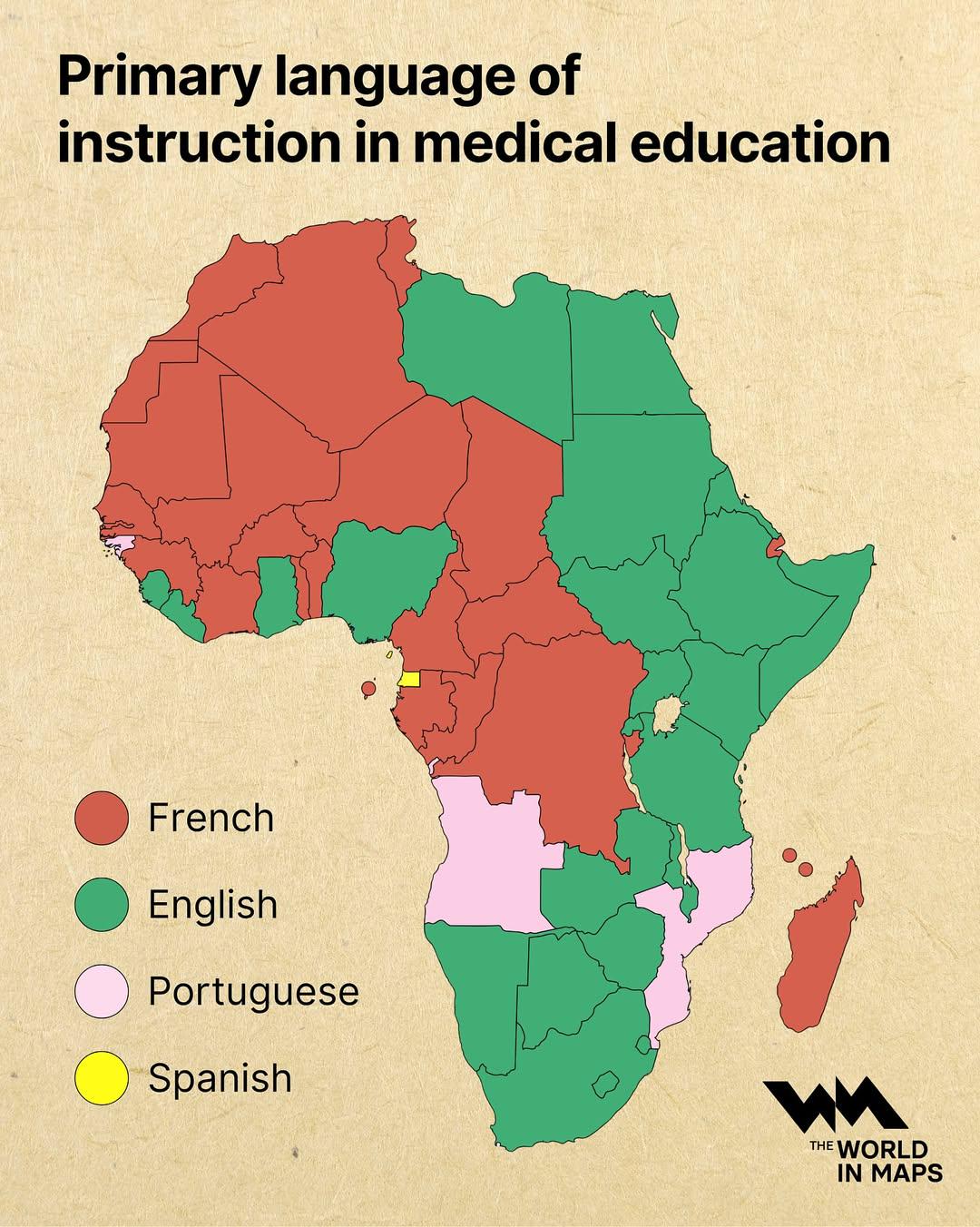Primary Language of Instruction in Medical Education Map


Marcus Rodriguez
Historical Geography Expert
Marcus Rodriguez specializes in historical cartography and geographic data analysis. With a background in both history and geography, he brings unique...
Geographic Analysis
What This Map Shows
The "Primary Language of Instruction in Medical Education" map provides a comprehensive overview of the languages used in medical schools around the world. This visualization highlights how different countries prioritize language as a medium of instruction in their medical education systems. It offers insights into the linguistic diversity in medical training across nations, revealing how language influences educational access, quality, and international collaboration in the medical field.
Deep Dive into Language and Medical Education
Language plays a crucial role in medical education, acting as both a barrier and a bridge in the learning process. The language of instruction can significantly impact students' understanding of complex medical concepts, their ability to communicate with patients, and their overall educational experience. Interestingly, the primary language used in medical education often reflects the country's colonial history, cultural influences, and current global trends in healthcare.
For instance, in many countries such as the United States and Canada, English is the primary language of instruction. This prevalence of English has implications not only for local students but also for international students who come to these countries for their medical degrees. A significant portion of medical students in these regions are non-native English speakers, which raises questions about equity and accessibility in medical education. Data suggests that approximately 20% of medical students in the U.S. come from international backgrounds, highlighting the global nature of medical training.
Conversely, many countries have embraced their native languages for medical instruction, leading to a rich tapestry of educational practices. For example, in countries like Germany and France, medical programs are predominantly taught in German and French, respectively. This approach allows students to learn in their native tongue, which can enhance understanding and retention. However, it can also limit the international mobility of graduates, as proficiency in English is often a requirement for practicing medicine globally.
In regions such as Africa and Asia, the landscape becomes even more complex. Many countries have multiple official languages, and medical programs may instruct in one or several of these languages. In South Africa, for example, medical education is offered in English, Afrikaans, and several indigenous languages. This multilingual approach aims to increase accessibility and cater to a diverse student population, but it also presents challenges in standardization and resource allocation.
Additionally, the rise of online medical education platforms has introduced new dynamics. Many institutions now offer courses in multiple languages to attract a broader audience. This trend reflects a growing recognition of the need for linguistic inclusivity, especially in fields as critical as medicine where clear communication is vital.
Regional Analysis
Examining the map reveals distinct regional patterns in the primary language of instruction in medical education. In North America, English dominates, with nearly all medical schools teaching in this language. In contrast, Europe showcases a mix; while countries like the UK and Ireland primarily use English, nations such as France, Germany, and Italy stick to their native tongues. This divergence illustrates the cultural pride and historical context of medical education in these regions.
In Asia, the situation varies widely. In countries like Japan and South Korea, medical education is primarily conducted in the local language, with some institutions offering English programs to cater to international students. Meanwhile, countries such as India and the Philippines utilize English as the primary language of instruction, reflecting their historical ties to British colonialism and the global influence of American education.
Africa's medical education landscape is particularly diverse, with many countries adopting a multilingual approach. For instance, in Nigeria, medical education is primarily in English, but students also learn in local languages to enhance patient interaction skills. This dual-language approach aims to ensure that future doctors can effectively communicate with the communities they serve.
Significance and Impact
Understanding the primary language of instruction in medical education is essential for several reasons. First, it has direct implications for the quality of healthcare delivery. Language barriers can hinder effective communication between healthcare providers and patients, ultimately affecting patient outcomes. Second, as the world becomes increasingly interconnected, the ability to train medical professionals who can work in diverse linguistic environments is crucial. This is particularly relevant in global health initiatives, where international collaboration is key to addressing health crises.
Moreover, the trends in medical education are shifting. With the rise of globalization, there's a growing push for medical schools to offer programs in multiple languages to cater to international students. This shift not only enhances accessibility but also fosters a more diverse medical workforce, which is essential for tackling global health challenges. As we look ahead, the importance of language in medical education will only continue to grow, making this map an invaluable resource for understanding the intricate relationship between language and healthcare education worldwide.
Visualization Details
- Published
- October 27, 2025
- Views
- 16
Comments
Loading comments...